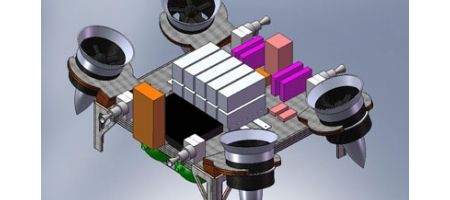An MIT team has teamed up with engineers from the Charles Stark Draper Laboratory to build a new type of lunar explorer that hops along the surface.

The developers say it would make it easier for astronauts to access tricky sites and travel greater distances.
Known as the Terrestrial Artificial Lunar and Reduced Gravity Simulator, or Talaris, the three-foot-wide vehicle is a prototype of a larger version to be used in space.
The team is using it to test guidance, navigation and control (GNC) software that would then be used to navigate the space-based hopper autonomously.
The prototype comes as part of MIT’s effort to win the Google Lunar X Prize, a $20 million competition to become the first team to send a privately funded spacecraft to the moon, travel 500 meters across its surface, and transmit video and images back to Earth.
Talaris uses two propulsion systems. The main one consists of four downward-pointing electric ducted fans that provide lift to counter the vehicle’s weight and simulate the gravity environments of different planetary bodies.
The second system uses compressed nitrogen gas to maneuver the vehicle as it operates in the simulated gravity conditions. With this setup, the researchers say they can repeatedly test different navigation algorithms on Earth to perfect the control software.
“Other organizations had developed little lander prototypes, but the drawback was that they were essentially Earth landers,” says Seamus Tuohy, director of space systems at Draper.
Talaris could be used to explore any body in the solar system that has enough gravity, including asteroids, says the team.
“There are limits to the terrain you can access on wheels, and with a hopper, you simply hop in, collect data and hop out,” says former NASA astronaut Jeffrey Hoffman of MIT.
Hoppers do have one drawback: their engines require fuel. Given that a hopper is limited to a certain number of hops, the Talaris researchers stress that hoppers should be thought of as an additional tool to complement rovers.
The researchers predict that if they can secure funding, a large-scale planetary surface hopper explorer could be built by the end of 2014.






